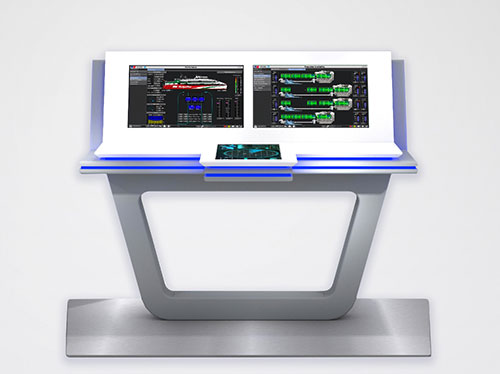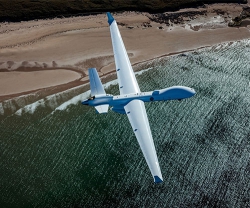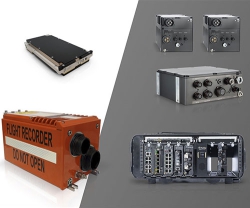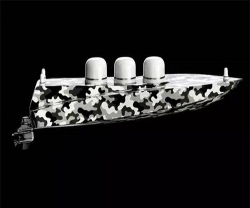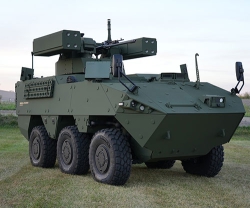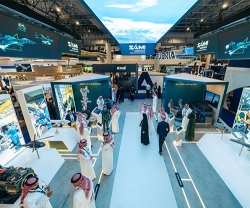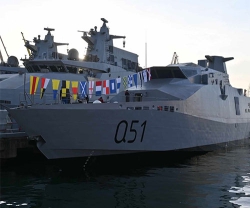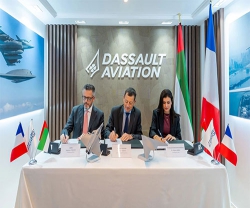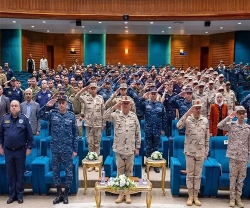Rolls-Royce is developing a new electronic monitoring system together with ZF to achieve maximum availability for ships, while keeping fuel consumption and CO2 emissions to a minimum.
The system will be tested by the Förde Reederei Seetouristik (FRS). The Equipment Health Management System (EHMS) collects and analyses data from the MTU engines, ZF transmission systems and other key components on a vessel, taking into account additional factors, such as wind, waves and currents. As of 2021, the system will ensure that fleet managers are able to operate their fleets as efficiently and as environmentally friendly as possible, and will allow them to monitor and align that in real time.
“Reliability is what we value most of all. When you have 680 passengers standing on the St. Pauli Piers in Hamburg waiting to board the Halunder Jet ferry to Helgoland, the reliable ship operation is of top priority,” said Tim Kunstmann, Managing Director of FRS Helgoline GmbH & Co. KG.
As a result, the shipping group is very interested in participating in the development of the new electronic monitoring system from Rolls-Royce and ZF to meet its own specific requirements. FRS attributes significant priority to the availability of vessels and their efficient and environmentally friendly operation.
The international business group has a total of 58 vessels operating ferry services and crew transfer services for offshore wind farms in Europe, North Africa, the Near East and North America, and currently has 40 MTU engines in service. FRS has put its trust in MTU engines since 1997. “The large number of vessels, the variety of vessel types operated and their areas of operation make the FRS fleet particularly interesting for the development project, as it enables us to develop a product designed specifically to meet the demands of a large fleet operator,” explains Bartosz Kowalinski, project manager at the Power Systems business unit of Rolls-Royce.
The next steps will be to set up an interface from the ZF transmission systems to the Equipment Health Management System, collect data from the various components of the powertrain on the Halunder Jet and then to analyse the data obtained. With the aid of agile working methods, interim results are repeatedly examined by the customer in order to determine to what extent they meet requirements. On the basis of this collaborative arrangement, Rolls-Royce and ZF hope to be able to offer maritime customers optimised and integrated propulsion solutions. To date, 70 per cent of MTU’s marine engines have been delivered with ZF transmission systems.
About Rolls-Royce Holdings plc
Rolls-Royce pioneers cutting-edge technologies that deliver clean, safe and competitive solutions to meet our planet’s vital power needs.
- Rolls-Royce Power Systems is headquartered in Friedrichshafen in southern Germany and employs around 11,000 people. The product portfolio includes MTU-brand high-speed engines and propulsion systems for ships, power generation, heavy land, rail and defence vehicles and for the oil and gas industry. Under the MTU Onsite Energy brand, the company markets diesel and gas systems for mission critical, standby and continuous power, combined generation of heat and power, and microgrids. Medium-speed engines from Bergen power ships and power generation applications.
- Rolls-Royce has customers in more than 150 countries, comprising more than 400 airlines and leasing customers, 160 armed forces, 70 navies, and more than 5,000 power and nuclear customers.
- Annual underlying revenue was £15 billion in 2018, around half of which came from the provision of aftermarket services.
- In 2018, Rolls-Royce invested £1.4 billion on research and development. We also support a global network of 29 University Technology Centres, which position Rolls-Royce engineers at the forefront of scientific research.
- The Group has a strong commitment to apprentice and graduate recruitment and to further developing employee skills. Rolls-Royce has customers in more than 150 countries, comprising more than 400 airlines and leasing customers, 160 armed forces, 70 navies, and more than 5,000 power and nuclear customers.

